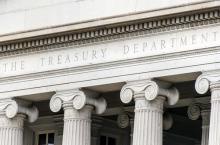Report: Lack of Fiber in the United States is a Market Failure, and Open Access is the Solution
A new report by the Electronic Frontier Foundation argues that the general lack of fiber network coverage across the United States - with barely a third of homes able to choose a fiber option - comes in large part from the domination of the broadband marketplace by incumbent providers who both own and operate the infrastructure that provides Internet access to the vast majority of Americans. It’s a classic market failure, authors Benoît Felten and Thomas Langer argue, where there’s a clear profitable business case for the existence of more fiber access that continues to go unaddressed. At its core, the failure is driven by the attitudes of monopoly Internet Service Providers (ISP) which prefer to reap the profits from existing legacy copper and cable infrastructure rather than invest in new build outs. As a result, a larger proportion of Americans than many other nations remain stuck on slower, more expensive connections.
The solution, the report shows, is relatively straightforward and economically viable for as many as 78 percent of all households across the country: the construction of a series of local or regional fiber networks operated on a wholesale basis, whereby any ISP that wants to can join an open, transparent marketplace, creating much more competition than exists in the current arena.
“Wholesale Fiber is the Key to Broad US FTTP Coverage” offers an economic case for open access fiber in improving access, affordability, and driving competition. Comparing the potential of what it calls a Vertically Integrated Operators deployment (i.e. traditional incumbent broadband providers that build, own, and operate networks for end users) and Wholesale Network Operators deployment (an open access arrangement where the physical infrastructure is owned by one entity that invites providers to operate on the network and connect end users for a fee), the report finds that the Wholesale Network Operator model reduces the risk of capital investment, drives infrastructure expansion, and would lead to future-proof connectivity for hundreds of millions of Americans.


